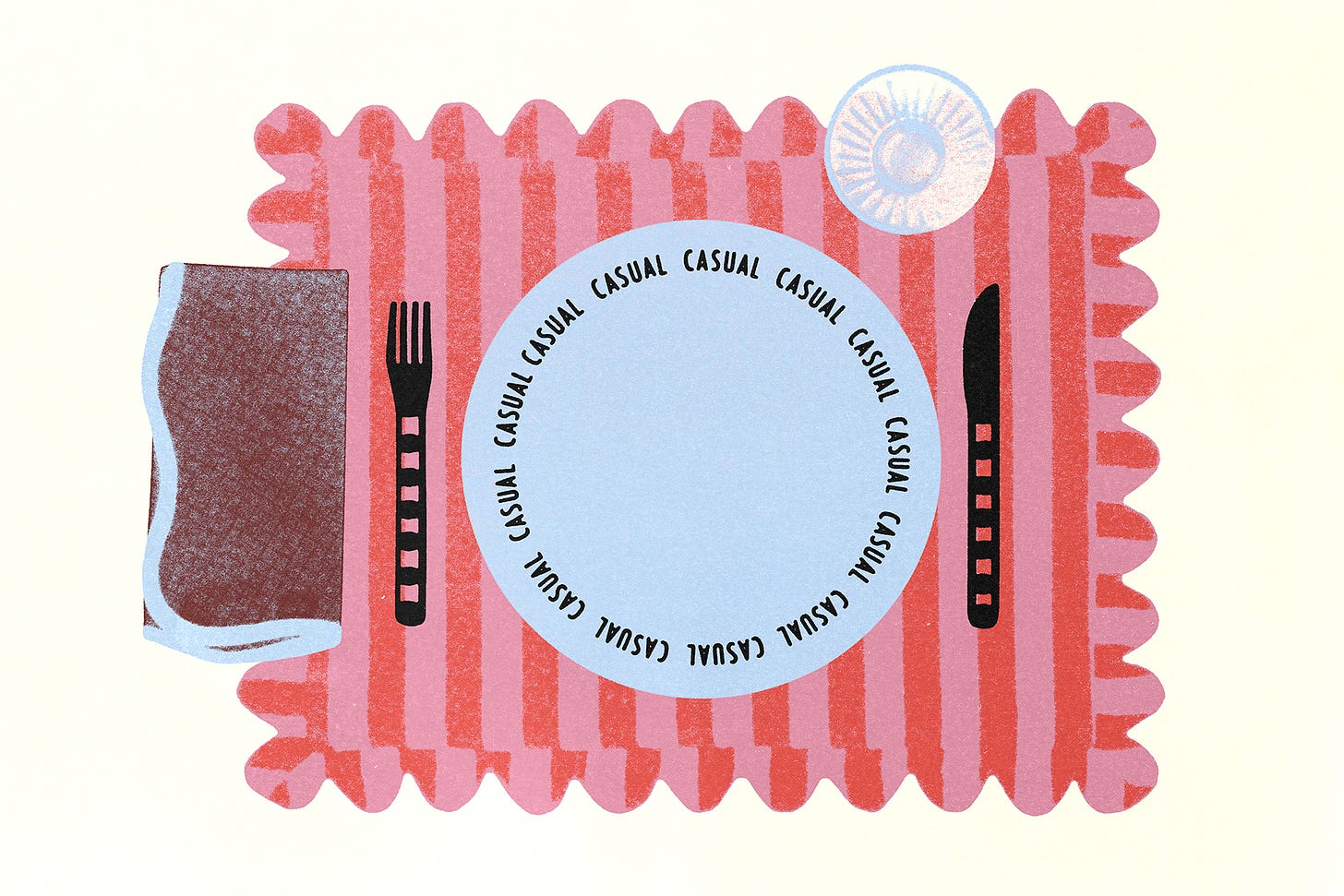The Art of Setting a Table
A guide to making dinner a place of creative play.
I was a child with grand creative ambitions.
Back-to-school shopping was a rebrand for myself annually; every notebook was a personal statement. I asked my parents the minute they opened their eyes in the morning if I could rearrange my room, again. “Jenna’s Project Book” was full of blueprints for imaginary homes I had designed (lazy rivers in the living room were my niche). Even school assignments were a time of graphic design efforts. I prolonged the amount of time it would actually take to write a paper by trying out the proper WordArt for hours.
My animal notebook project was prime 3rd-grade Jenna. Every page was supposed to detail facts about a type of animal, and I insisted that every font match the animal’s personality. The zebra font was not the iguana font, and matching them was abhorrent to me.
Sitting at the family computer side-by-side with Microsoft Word blinking at us, my mom sighed and read the rubric to me, ensuring that nowhere did it say to do that. It would probably look better if my pages matched, even. And take a lot less time, so I could go play. I put my foot down, unrelentingly stubborn. She was right — everyone else’s pages matched, and it was also rather difficult to read the tree frog page. It took me twice as long to do the assignment. But boy, did every animal have their matching font.

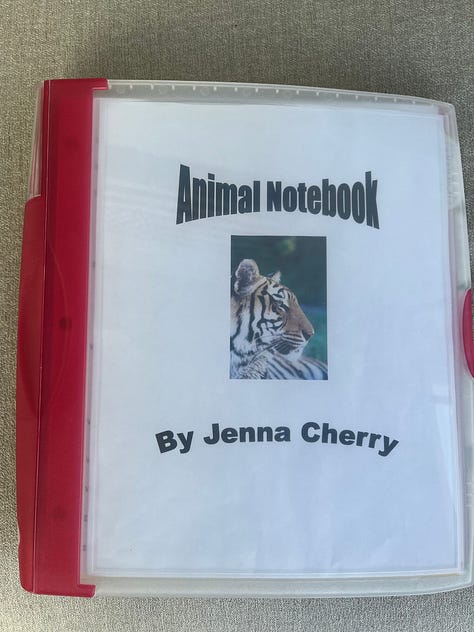

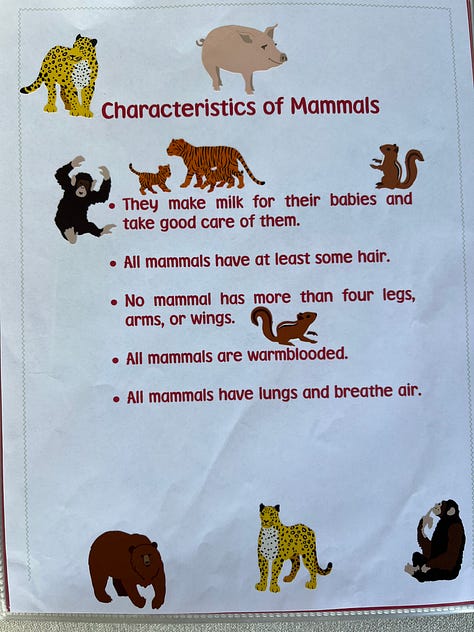
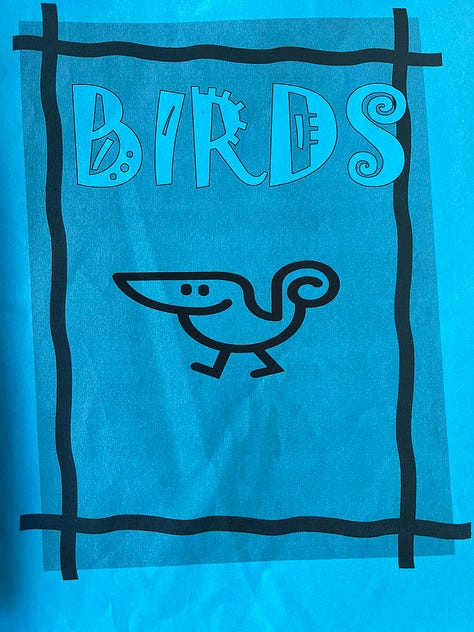



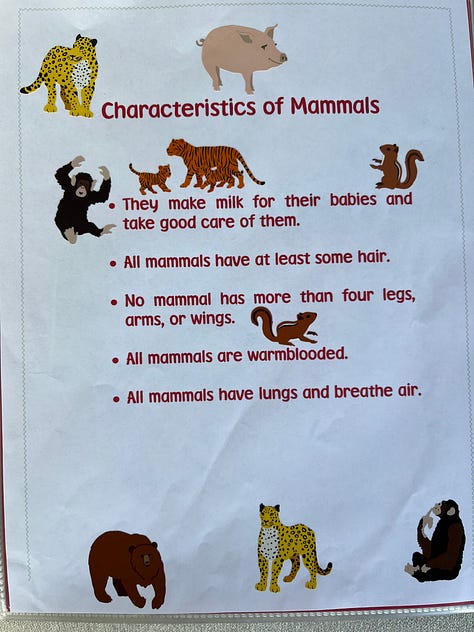
When I had exhausted the creative limits of my own house for the day, I’d ask to go to my grandparents’ house. Granna was usually down for HGTVing and graciously letting me rearrange stuff.
I remember one fall, the slight crisp-air-feeling in the backyard, strolling through their yard to find perfect sticks and branches with Grandpa. He was letting me use leftover spray paint (can you even imagine my excitement!) to turn them silver. And Granna was going to let me make a winter display for the dinner table. I had a vision. And it included glitter. And it got everywhere.
That was my first tablescape. I was so proud of it. We ate dinner, dodging flecks of glitter straying from my branches.
The older we get, the more we forget to do things like that. We lose the excitement over small things like what a table could look like for dinner, or what font would match a crocodile. We all grow into laborious jobs, tight budgets, and busy schedules. But in the transition of picking up sticks in the yard to commuting to our office jobs, we lose the glitter a bit. We forget. We forget how magical things could be.
I started this Substack as a way to bring the magic back. For myself, but also for you, if you’re into that.
Because now that I am grown, I have more freedom than ever to create. What a joy! What an opportunity! In a world with Pinterest pressure and social media envy, I believe there is a way to reclaim the lovely parts of childhood creativity, even just for a meal. Just for you and the people around you.
I think a great place to start practicing the magical child-like creativity for the sake of creativity is the dinner table. Why not set the table, even just for breakfast, just for your family? It’s a great way to create.
Here is a guide to detail everything you may need, as well as a ton of inspiration for your next dinner:
In any creative endeavor, there are usually rules to learn. And then, usually once you learn them, you learn to break them. But let’s start with the rules.
How to Properly Set a Table:
Emily Post wrote her first book on Etiquette when she was 50 years old, and it has been adapted and modernized for 18 editions. Typically, in terms of proper manners, hosting guides, and social etiquette, I reference Post since she really is the queen of it all. I looked through her work on place settings and tablescaping, and sure enough, she has a detailed guide. We adapted her graphics that come alongside her table-setting guide to be a little more Feeling! Magazine.
She starts with some ground rules:
“The first and basic rule to get you started is: Utensils are placed in the order of use; from the outside in.
A second rule, with only a few exceptions, is: Forks go to the left of the plate, and knives and spoons go to the right. (The oyster fork is the only fork placed to the right of the setting if it will be used.)
Finally, only set the table with utensils you will use. Not serving soup? Then, no soup spoon for you.”
Casual
Keep reading with a 7-day free trial
Subscribe to Feeling! Magazine to keep reading this post and get 7 days of free access to the full post archives.




